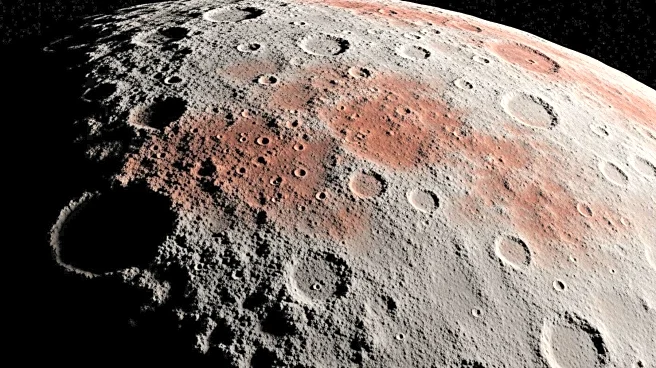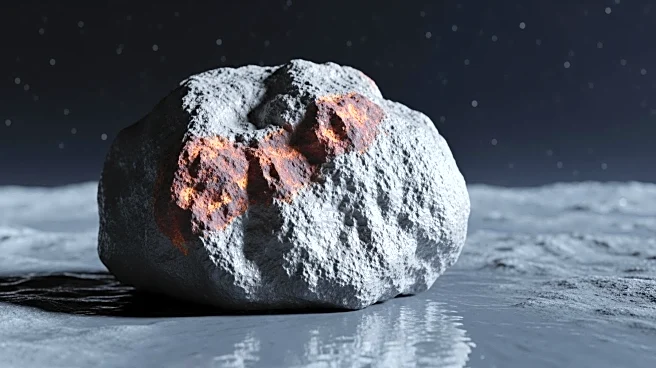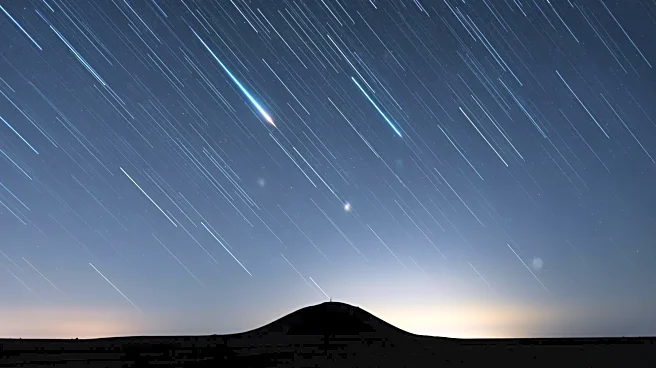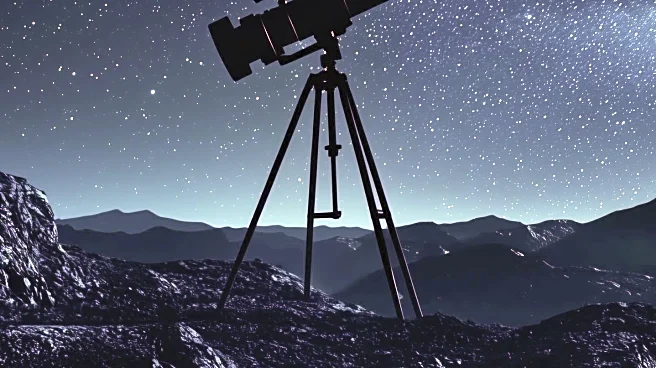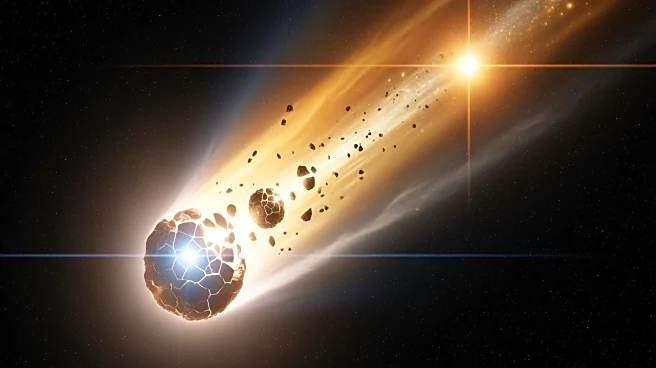What's Happening?
A team of Chinese scientists has discovered tiny grains of hematite and maghemite, types of iron oxides, in materials collected from the Moon's far-side South Pole-Aitken Basin by the Chang'e 6 probe.
This finding challenges the previous understanding that the lunar surface is a strongly reducing environment, which is typically not conducive to rust formation. The researchers suggest that asteroid or comet impacts may have created localized oxidizing conditions, allowing iron to oxidize into hematite and maghemite. These grains are micron-sized and buried deep in the soil, indicating that the effect was fleeting and localized.
Why It's Important?
The discovery of rust on the Moon has significant implications for lunar geology, suggesting that the Moon's surface may not be as chemically inert as previously thought. This finding could lead to new insights into the Moon's magnetic patches and its geological history. Additionally, it highlights the capabilities of the China National Space Administration in advancing lunar exploration and sample return science, potentially influencing future international space missions and collaborations.
